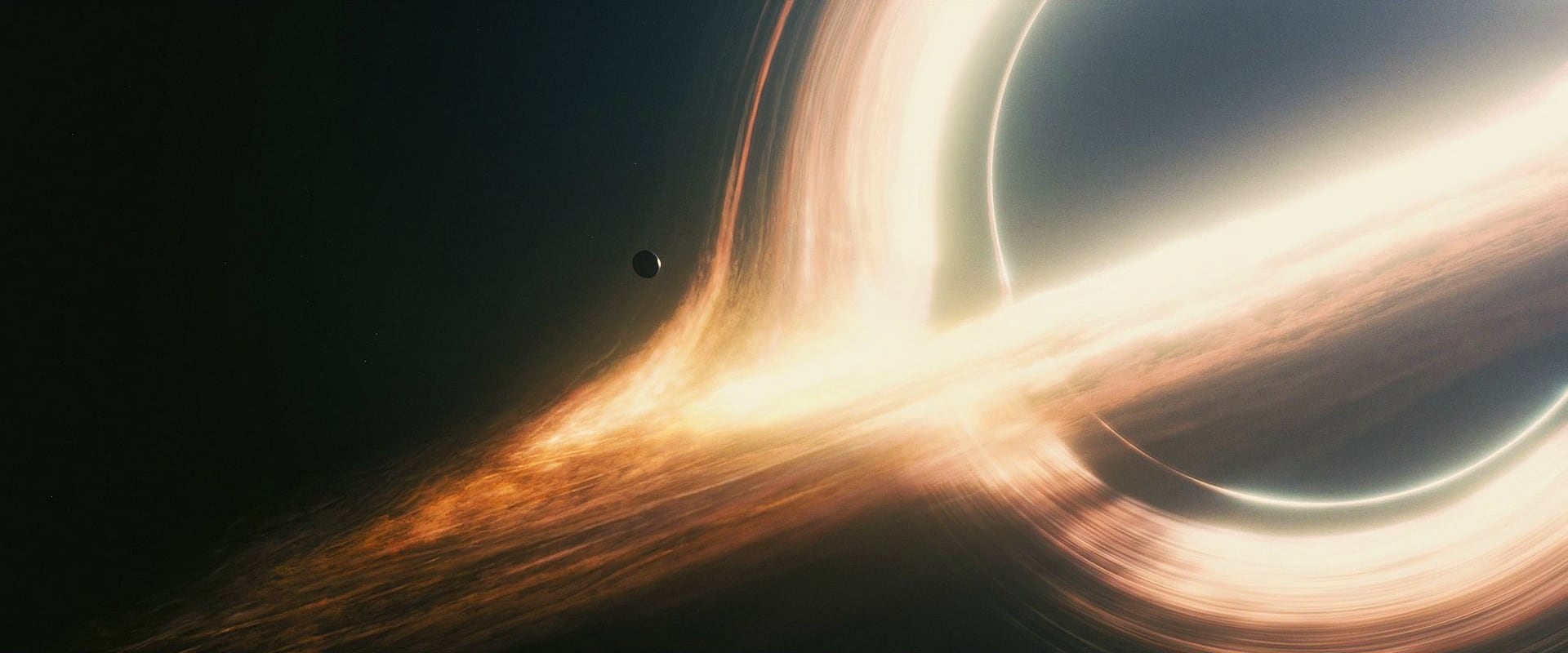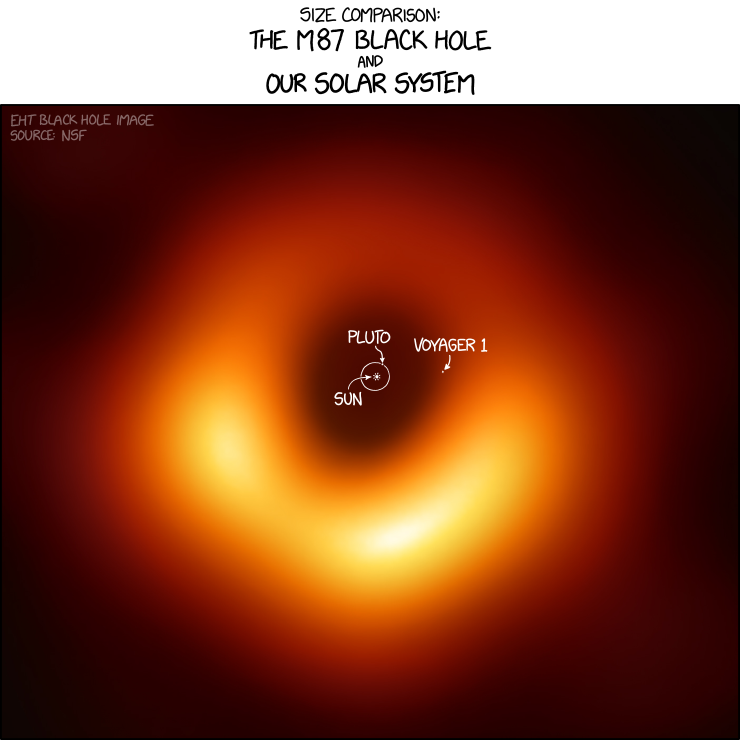![]() Week 78 was posted by Charanjit Chana on 2019-04-22.
Week 78 was posted by Charanjit Chana on 2019-04-22.
A black hole is invisible by nature. One of the strangest predictions to come out of Albert Einstein's theory of general relativity, a black hole emits no radiation we can detect, and it swallows up everything that falls on it, matter and light alike.
With Interstellar being one of my favourite movies I was intrigued to see what a black hole would really look like. The movie was hailed at being fairly scientifically accurate and depicted a blank sphere surrounded by light.

I don't think the size of the black hole itself or what the size of the achievement was obvious at first, certainly not in the coverage I saw. Having seen the photo many times in isolation, it wasn't until xkcd.com put together a size comparison between M87 and our solar system:

Forget the size of the solar system, would Earth even register as a pixel?
What was achieved?
The feat marks the first time in history that astronomers have seen the shape of an event horizon.
Axios had a good summary of why it was a triumph for modern astronomy:
Those observatories worked in tandem with one another to look into the heart of M87, revealing the black hole in its center. But getting this photo wasn't easy.
- The EHT is a group of radio observatories that stretch around the globe from the U.S. to Greenland and even the South Pole, creating a virtual telescope the size of Earth.
......
- ...the EHT effectively revealed the shadow of a black hole illuminated by the matter on the edge of the object's event horizon — the area near the black hole known as the "point of no return," where the gravity is so great that nothing can escape.
How they did it: All of the radio telescopes working with the EHT used atomic clocks to sync up observations of the black hole. But there was too much data to send over the internet. Instead, the team had to ship the data by mail to one facility where it could be processed by a supercomputer.
You can watch the video by Vox a little further down for more on how the data was captured and then moved around. We can see the stars with our eyes, we've sent probes out into space and now we've been able to 'see' the invisible. What an achievement.
Read more
If you'd like to read more, over the last couple of weeks I've linked to coverage from Axios: where black hole research goes next, the BBC and there was a great video from VOX.
The BBC also uploaded on the astronomers reacting to the image and National Geographic take an in-depth look at the unveiling.
Update
One piece I didn't get to see before publishing was this video from Veritasium on how the photo was captured and why it's so blurry:
Tags: astronomy, black hole, m87, nasa, astronomy, black hole, m87, nasa